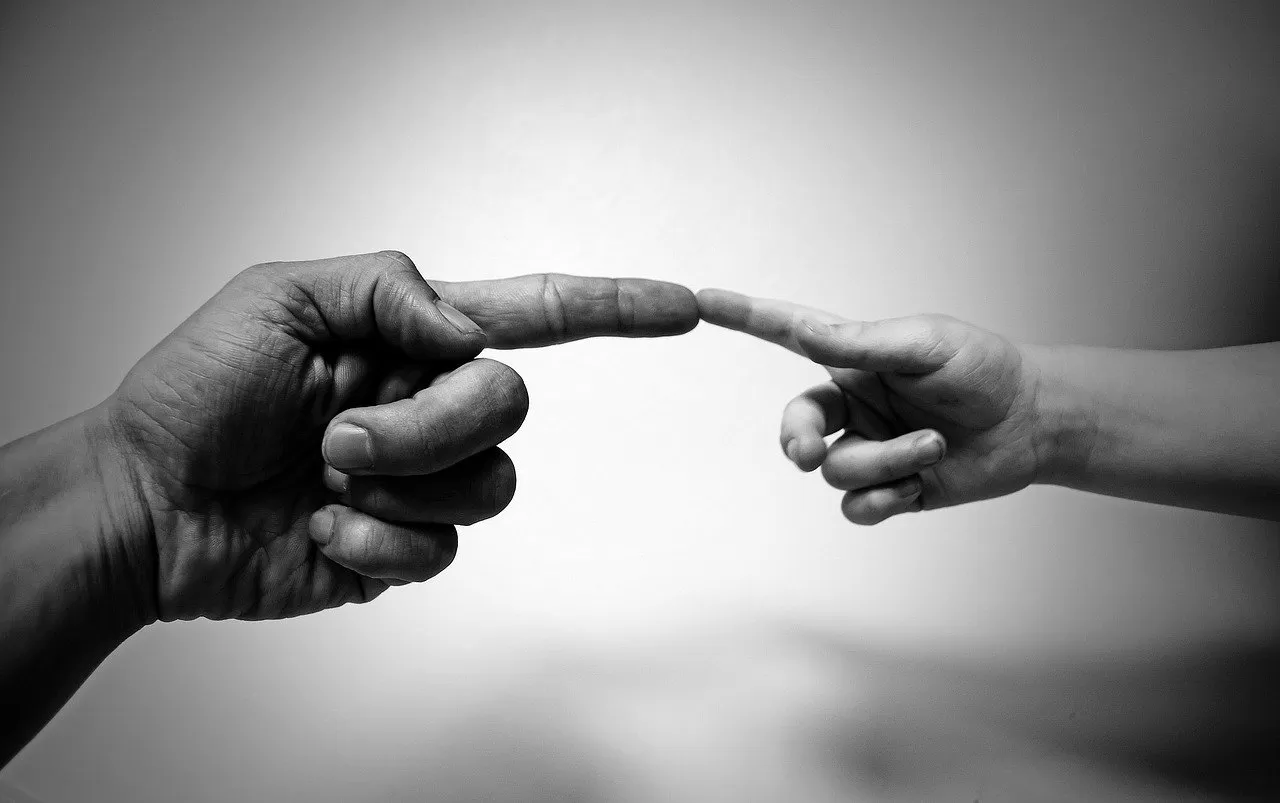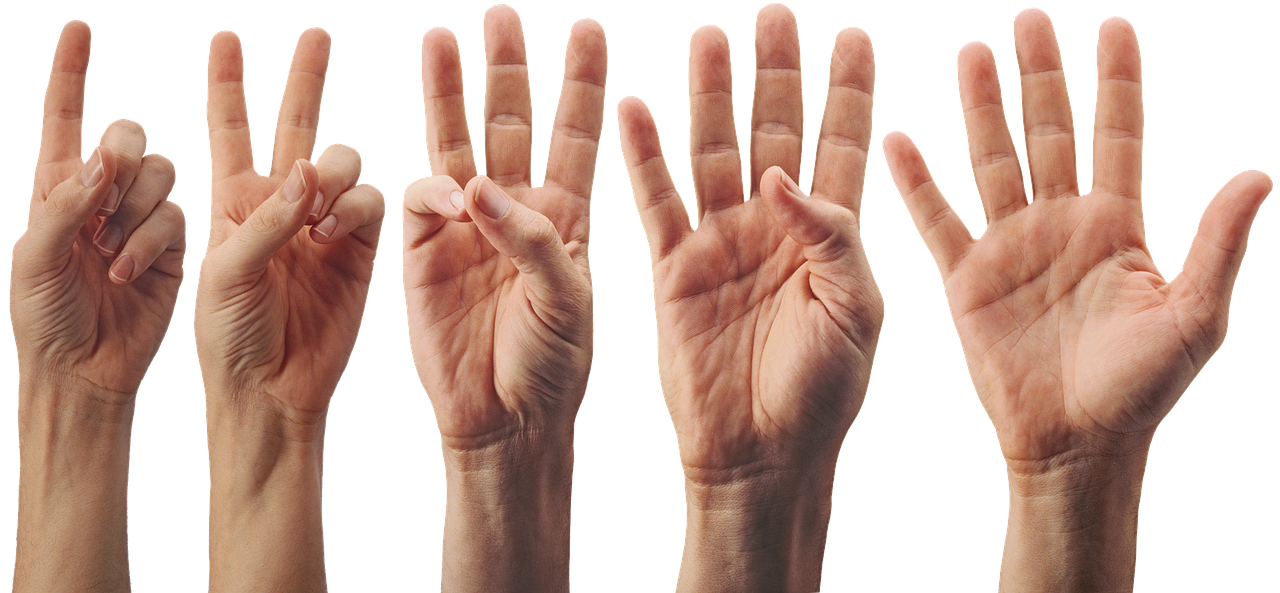A common question that comes from my clients is: what should I do with my hands? During speeches, the issue of hand positioning and gestures can be a problem. In this article you will find tips on what to do with your hands.
Is it better to keep your hands stiff in one place or to make gestures?
Each of us has our own style of presentation, which results from our personality. If we are quiet and calm by nature, we will probably speak slowly, calmly and emanate these qualities on stage. In turn, if we are dynamic, expressive and loud on a daily basis, then during the speech we will keep these features and, for example, will speak quite quickly. How does this apply to gesticulation? When looking for your way of expression, we should first and foremost ensure natural demeanour and authenticity. Our gestures and body language that reflect our character are consistent with us. Well, what are our options? Which gestures are desirable and which are not?

Where do you keep your hands?
Our hand movements should oscillate between the hip line and the chest. Especially for those who perform on stage, on a platform or in front of cameras, it is worth ensuring that our gestures do not cover our faces. It looks bad both on camera and from the audience level. If people come to hear or see us, it is worth giving them such a chance ? You can imagine a red line that runs above the chest and do not cross it. A mirror or recording on the phone may be useful for exercising.
How grand your gestures can be?
The happy medium rule applies here. There are no strict guidelines on how many centimeters from the body is too little and how many too much. It is worth avoiding excessive theatricality if you do not emphasize a word or sentence. Definitely better less than too much. Observe how your hands move when you talk to a colleague at work or a friend. This can be your benchmark and reference point. Too many moves can distract the audience. Gestures can beautifully highlight what you are talking about, so don’t forget about them.
How to gesticulate? Do’s and don’ts with gestures during a presentation
Hands in your pocket
 The votes are divided on this issue. Some find it unnecessary nonchalance and disregard, others as a symptom of stress or just freedom. In my opinion, this position can be helpful for people who are very stressed and completely do not know what to do with their hands. It all depends on the context. If your speech is serious or sad, you should avoid having your hands in your pocket.
The votes are divided on this issue. Some find it unnecessary nonchalance and disregard, others as a symptom of stress or just freedom. In my opinion, this position can be helpful for people who are very stressed and completely do not know what to do with their hands. It all depends on the context. If your speech is serious or sad, you should avoid having your hands in your pocket.
 Hands on thighs
Hands on thighs
Holding hands in this way during a public speech will close the possibility of expression and highlighting your thoughts with gestures. However, this is a fairly safe position to start with.
 Basket
Basket
A few years ago it was a very popular gesture among politicians. It was recommended as an expression of reflection and wisdom, which was why many people used it excessively. It is currently on the list of don’ts, it has definitely become obsolete.
 Crossed arms
Crossed arms
I strongly advise against this position. Sometimes, too quickly, we assess a person with crossed arms as closed, unwilling or withdrawn. This can be, for example, a symptom of feeling cold. Nevertheless, closed attitudes are percived mainly negatively, so we should avoid it and consciously open ourselves to contact with the audience.
 Natural gesticulation
Natural gesticulation
Number one in the category of best body language. The most important aspect of body language, natural gestures are something that everyone should strive for. It can be considered the most desirable form of expression. Natural gestures flow from a given moment, occurring emotions, and they emphasize words and are a beautiful complement to the content. At the beginning you will need to build up your methods and skills, but eventually the gesticulation will manifest itself naturally.
 Football stance
Football stance
Most often we can see it on the football field, when the whole team is in a row. It is the standard on the pitch, but not during speeches. It symbolizes protection against danger or the attitude of a little girl or boy.
 Hands on the back
Hands on the back
They can give us seriousness and give us the character of reflection. The attitude in which we hold our hands behind can be associated with great philosophers. If held for too long, the position can look unnatural and badly on camera.
 Hands “for prayer“
Hands “for prayer“
Rather discouraged.
 Hands on hips (sideways)
Hands on hips (sideways)
A position in which we are preparing for an attack or defense. We can use this gesture for a moment or when only one hand rests on the hip and the other hand is loosely gesturing. Stiffly held hands on hips for a long time will look as if we wanted to riverdance ?
 Holding a clicker or a pen with both hands
Holding a clicker or a pen with both hands
A safe position if we don’t know what to do with our hands. We can then hold the clicker or marker with both hands and not worry about how to move our hands.
 Holding the clicker in one hand, the other along the torso
Holding the clicker in one hand, the other along the torso
A safe position if we don’t know what to do with our hands. We can then hold the clicker or marker with one hand, and the other can be freely straightened.
 Holding the clicker in one hand, the other naturally gesticulates
Holding the clicker in one hand, the other naturally gesticulates
Very recommended position if we use presentations and need to change slides using a clicker or write with a marker, e.g. on a flipchart. In fact, in this situation one is forced to hold something in one hand so that the other hand is free to gesticulate.
 Hand embracing
Hand embracing
A safe position and friendly to recipients. It is worth remembering, however, not to stand only in this position throughout the whole performance.
How to perform natural gestures?
From my experience in public speaking, I have noticed a correlation between the naturalness of gesticulation and mastery of a text or song. Thinking about what you present can be a tip for you during practising. Reciting memorized sentences without thinking about the content, you lose your natural expression. Try to do this exercise – imagine that you present the fragment you have to play, sing or say to a child who is hearing it for the first time. Will you not then naturally “translate” and gesture? After some time, you will be on stage starting to gesticulate naturally. Sometimes it may be that the stress is so paralyzing that we freeze and cannot move. Articles about stress and relaxation techniques you can find here.






1 Comment
Comments are closed.